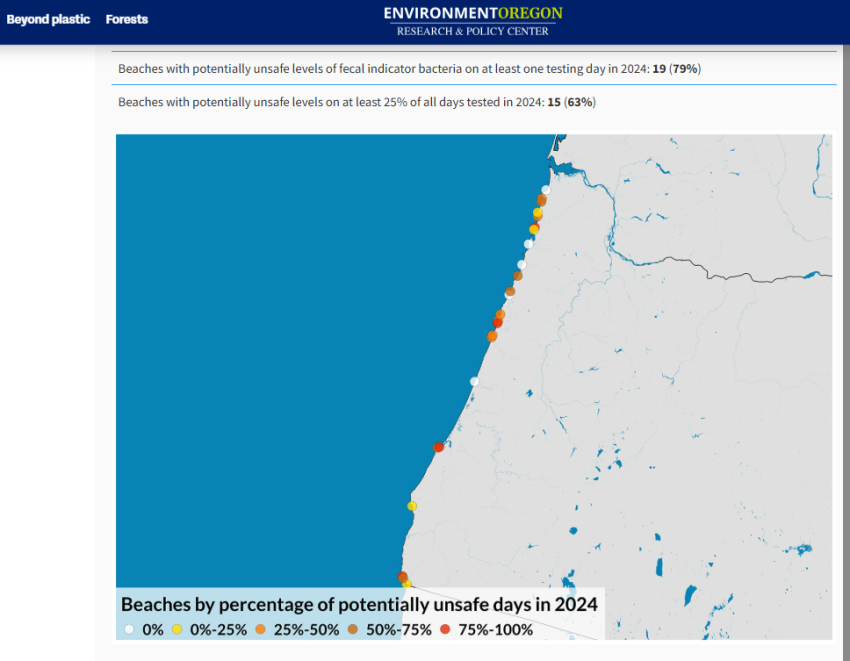Portland, Ore. – As Oregonians return to local beaches this summer, a new report released on Tuesday warns that more work is needed to ensure that all waters are safe for swimming. In 2024, 19 Oregon beaches were potentially unsafe for swimming on at least one of the days sampled, according to Safe for Swimming?, Environment Oregon Research & Policy Center’s latest analysis of bacteria testing. The new research comes as Congress considers funding for the main federal program to stop sewer overflows and runoff pollution.
“Even as Oregonians are back to enjoying the fresh sea breeze and splash of waves at the beach, pollution is still plaguing too many of the places where we swim,” said Ian Giancarlo, oceans advocate with Environment Oregon Research & Policy Center. “Now is the time to fix our water infrastructure and stop the flow of pathogens to our beaches.”
Scientists estimate 57 million instances of people getting sick each year in the United States from swimming in polluted waters. Those illnesses can include nausea, diarrhea, ear infections and rashes.
To assess beach safety, the group examined whether fecal indicator bacteria levels exceeded the U.S. Environmental Protection Agency’s (EPA) most protective “Beach Action Value,” which is associated with an estimated illness rate of 32 out of every 1,000 swimmers. Fifteen Oregon beaches exceeded this safety threshold on at least one-quarter of days tested last year, with Rockaway Beach at 100% for potentially unsafe conditions, and Cannon Beach on the north coast having higher bacteria levels than the threshold on 50% of days tested.
For people who want to know if their favorite beach is currently safe for swimming, the new report also includes information on how to find the latest testing data for beaches in Oregon. Available from the Oregon Health Authority’s Oregon Beach Monitoring Program website at http://www.healthoregon.org/beach or call 971-673-0440, or call OHA toll-free information line at 877-290-6767
Polluted runoff from roads and parking lots, overflowing or failing sewer systems, and industrial livestock operations are common sources of contamination that can put swimmers’ health at risk and lead authorities to close beaches or issue health advisories.
The report recommends major investments to stop sewage overflows and runoff pollution. Smart investments in nature-based solutions and repair of aging systems yield cleaner water. For example, Portland’s Big Pipe Project reduces sewer overflows by hundreds of millions of gallons per year and when paired with other green stormwater infrastructure efforts, the city has been able to reduce combined sewage discharges by over 90%. But Oregon communities will need more resources to replicate that success elsewhere.
“More than 50 years ago, our nation resolved that we would make all our waterways safe for swimming,” added Giancarlo. “It is time for Oregon officials to commit themselves to that goal and dedicate the resources needed to achieve it.”

Environment Oregon Research & Policy Center has one mission that drives everything we do: to protect our natural world. We envision a better, greener Oregon: one that protects and restores more places where all life can thrive and offers us and our children the opportunity to live healthier, more enriching lives. Our staff research the issues, educate the public, and win tangible results for a greener future.

